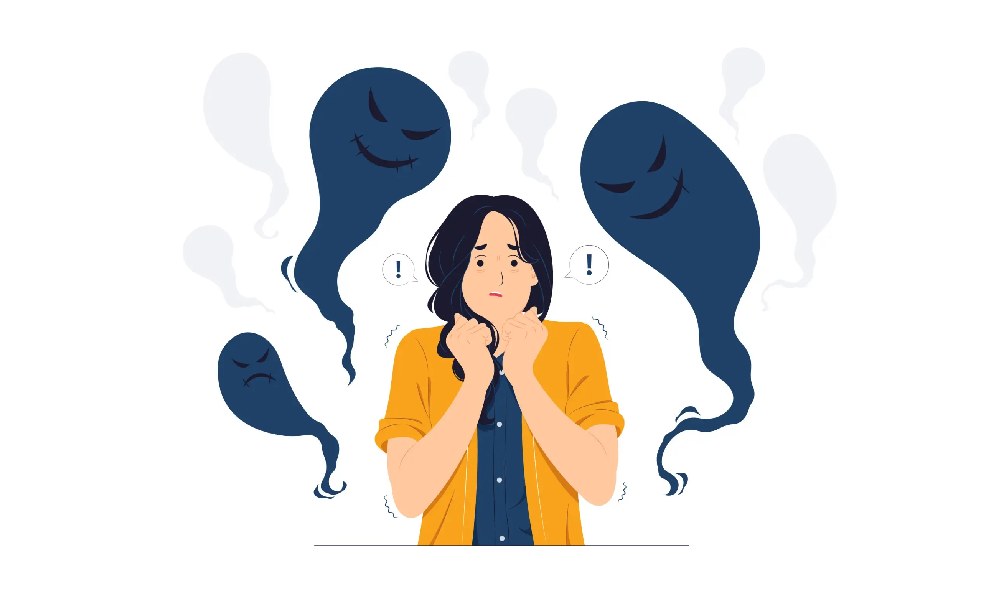The best medicine for phobias
The best treatment for phobias typically involves a combination of psychological and, in some cases

Marzieh Ahankoob Nejad
Clinical counselor
The best medicine for phobias
The best treatment for phobias typically involves a combination of psychological and, in some cases, pharmacological approaches. Here are the most effective treatments for phobias:
To treat all types of phobias with New Pathways Counseling Clinic Stay in touch.
1-Cognitive-Behavioral Therapy (CBT):
– CBT is considered the gold standard treatment for phobias.
– It focuses on identifying and challenging the irrational thoughts and beliefs that underlie the phobic reaction.
– CBT often includes exposure therapy, where the person is gradually exposed to the feared object or situation in a safe, controlled environment.
– Exposure therapy is a core component of CBT for phobias.
– It involves gradually exposing the person to the feared stimulus, either in imagination or in real life, until the anxiety and fear subside.
– This helps the person learn that the feared object or situation is not as threatening as they thought, and they can develop coping strategies.
3-Relaxation Techniques:
– Techniques like deep breathing, progressive muscle relaxation, and visualization can help manage the physical symptoms of anxiety during exposure therapy.
– These methods can be used in combination with other treatments to enhance the effectiveness of the therapy.
4-Medication:
– In some cases, medications may be prescribed to help manage the symptoms of phobias, especially if the phobia is severe or the person is experiencing significant distress.
– Commonly used medications include anti-anxiety drugs (e.g., benzodiazepines) and antidepressants (e.g., selective serotonin reuptake inhibitors, or SSRIs).
– Medications are typically used as a short-term adjunct to psychological treatment, not as a standalone solution.
5-Support and Education:
– Providing support, education, and encouragement to the person with a phobia can be an important part of the treatment process.
– This can include involving family members or friends in the therapy, as well as providing information about the nature of the phobia and the treatment approach.
It’s important to note that the specific treatment plan will depend on the type and severity of the phobia, as well as the individual’s preferences and needs. A mental health professional, such as a therapist or psychologist, can help determine the most appropriate course of treatment.
Also, reading the Phobia treatment article can be useful for you.
6-How can a person with a phobia determine if they should seek professional help or try self-management techniques first?
Here are some guidelines to help a person with a phobia determine if they should seek professional help or try self-management techniques first:

1-Assess the severity of the phobia:
– If the phobia is relatively mild and does not significantly interfere with the person’s daily life, self-management techniques may be a good starting point.
– However, if the phobia is severe, causing significant distress or impairment in the person’s life, seeking professional help is likely the best course of action.
2-Consider the duration and persistence of the phobia:
– If the phobia has been present for a long time and the person has tried to manage it on their own without success, seeking professional help may be more appropriate.
– Persistent or worsening phobias often require the guidance and structured treatment approach provided by a mental health professional.
3-Evaluate the impact on daily functioning:
– If the phobia is significantly interfering with the person’s ability to work, maintain relationships, or engage in daily activities, seeking professional help is recommended.
– Phobias that significantly limit a person’s life and prevent them from fulfilling their responsibilities may require more intensive treatment.
4-Assess the person’s willingness and ability to engage in self-management techniques:
– If the person is motivated and feels capable of implementing self-management techniques, such as relaxation exercises or gradual exposure, they may be able to start with these approaches.
– However, if the person feels overwhelmed or uncertain about their ability to manage the phobia on their own, seeking professional help may be the better option.
5-Consider the availability and accessibility of professional help:
– If the person has access to a qualified mental health professional, such as a therapist or psychologist, seeking their guidance may be the most effective approach.
– In some cases, the person’s financial resources or insurance coverage may limit their ability to access professional help, making self-management techniques a more feasible option.
In general, if the phobia is mild, the person is confident in their ability to manage it, and it does not significantly interfere with their daily life, self-management techniques may be a good starting point. However, if the phobia is severe, persistent, or significantly impacting the person’s functioning, seeking professional help is usually the best course of action to ensure effective and lasting treatment.
How can a person determine if their phobia is severe enough to warrant professional help?
Here are some key factors to help a person determine if their phobia is severe enough to warrant seeking professional help:

1-Degree of fear and anxiety:
– If the person experiences an overwhelming, irrational, and debilitating fear in the presence of the phobic stimulus, it may be a sign that the phobia is severe.
– Severe phobias often involve physical symptoms like rapid heartbeat, sweating, trembling, and feelings of panic that are difficult to manage on one’s own.
2-Avoidance of the phobic stimulus:
– If the person goes to great lengths to avoid the phobic object or situation, even if it significantly disrupts their daily life, it indicates a severe phobia.
– Severe phobias often lead to avoidance that interferes with work, social activities, or other important aspects of the person’s life.
3-Interference with daily functioning:
– If the phobia significantly interferes with the person’s ability to perform daily tasks, maintain relationships, or pursue their goals, it is likely severe.
– Severe phobias can lead to significant impairment in various areas of life, such as work, school, or social interactions.
4-Duration and persistence of the phobia:
– If the phobia has been present for a long time (e.g., several months or years) and the person has been unable to manage it through self-help techniques, it may be a sign of a severe phobia.
– Persistent, long-standing phobias often require professional intervention.
5-Distress and emotional impact:
– If the phobia causes the person intense distress, worry, or feelings of helplessness that they struggle to cope with, it is likely a severe phobia.
– Severe phobias can have a significant emotional impact, leading to issues like depression, anxiety, or reduced quality of life.
6-Impairment in social or occupational functioning:
– If the phobia interferes with the person’s ability to engage in social activities, maintain employment, or pursue educational or career goals, it may be a sign of a severe phobia.
– Severe phobias can lead to significant impairment in various areas of a person’s life.
If a person experiences several of these factors, it may be an indication that their phobia is severe enough to warrant seeking professional help from a mental health provider, such as a therapist or psychologist. They can provide a more comprehensive assessment and develop a tailored treatment plan to address the specific needs of the individual.
Finding Freedom from Anorexia: A Compassionate Guide to Treatment
Finding Freedom from Anorexia:A Compassionate Guide to Treatment Anorexia is...
Read MoreHow to Treat Bulimia: Therapy, Medication & Recovery Tips
How to Treat Bulimia:Therapy, Medication & Recovery Tips Looking for...
Read More


